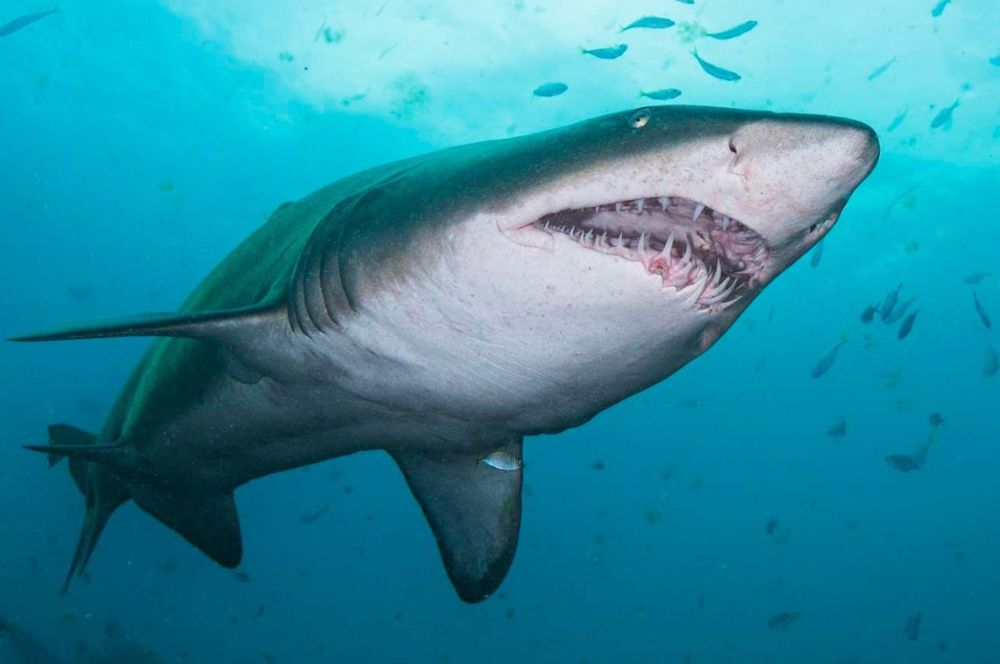
Facts About the Grey Nurse Sharks
Grey nurse sharks migrate up and down the east coast of Australia, from Narooma in southern NSW to central Queensland. They are slow but strong swimmers and thought to be more active at night. Growing to a maximum of three metres, they historically have been hunted for their fins, flesh and oil.

greynurseshark Australia Dive
The Biology and Conservation Status of the Grey Nurse Shark (Carcharias Taurus Rafinesque, 1810) in New South Wales, Australia. Aquatic Conservation: Marine & Freshwater Ecosystems. 6:1-20. Stead, D.G. 1963. Sharks and Rays of Australia. Angus & Robertson. Pp. 211. Stevens JD 1987 Sharks. Golden Press. Pp. 240.

Grey nurse shark Australian Geographic
The Grey Nurse Shark, also known as the sand tiger shark or spotted ragged-tooth shark, has a large, stout body tapered at each end, a pointed snout and small eyes. The upper surface of Greynurse Sharks is bronze coloured, and the underside is pale white. Juveniles often have dark spots on the lower half of the body and the caudal (tail) fin.

Species Spotlight Grey Nurse Shark — Defend Them All Foundation
The number of critically endangered grey nurse sharks is increasing on Australia's east coast with the highest number of pregnant sharks recorded at a unique breeding site in 13 years. Key points: The population of grey nurse sharks on the east coast of Australia has been increasing since 2008
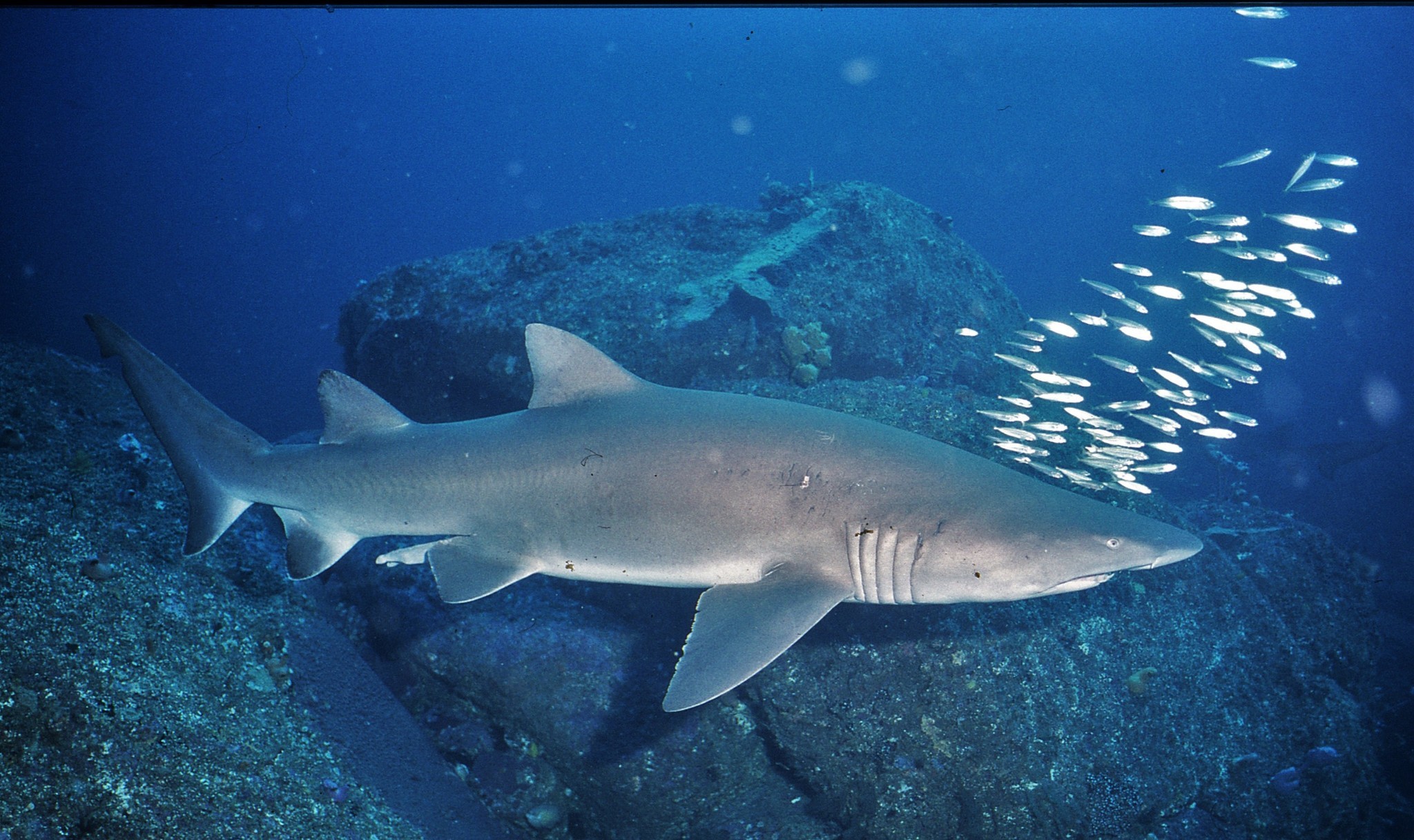
Grey Nurse Shark Encyclopedia of Life
The grey nurse shark, Carcharias taurus, also called the ragged-tooth shark, is an elasmobranch and belongs to the odontaspididae (ragged-tooth) shark family. It can easily be recognized by its characteristic conical snout and under hung jaw. Both jaws are laden with sharp, long and pointed teeth.
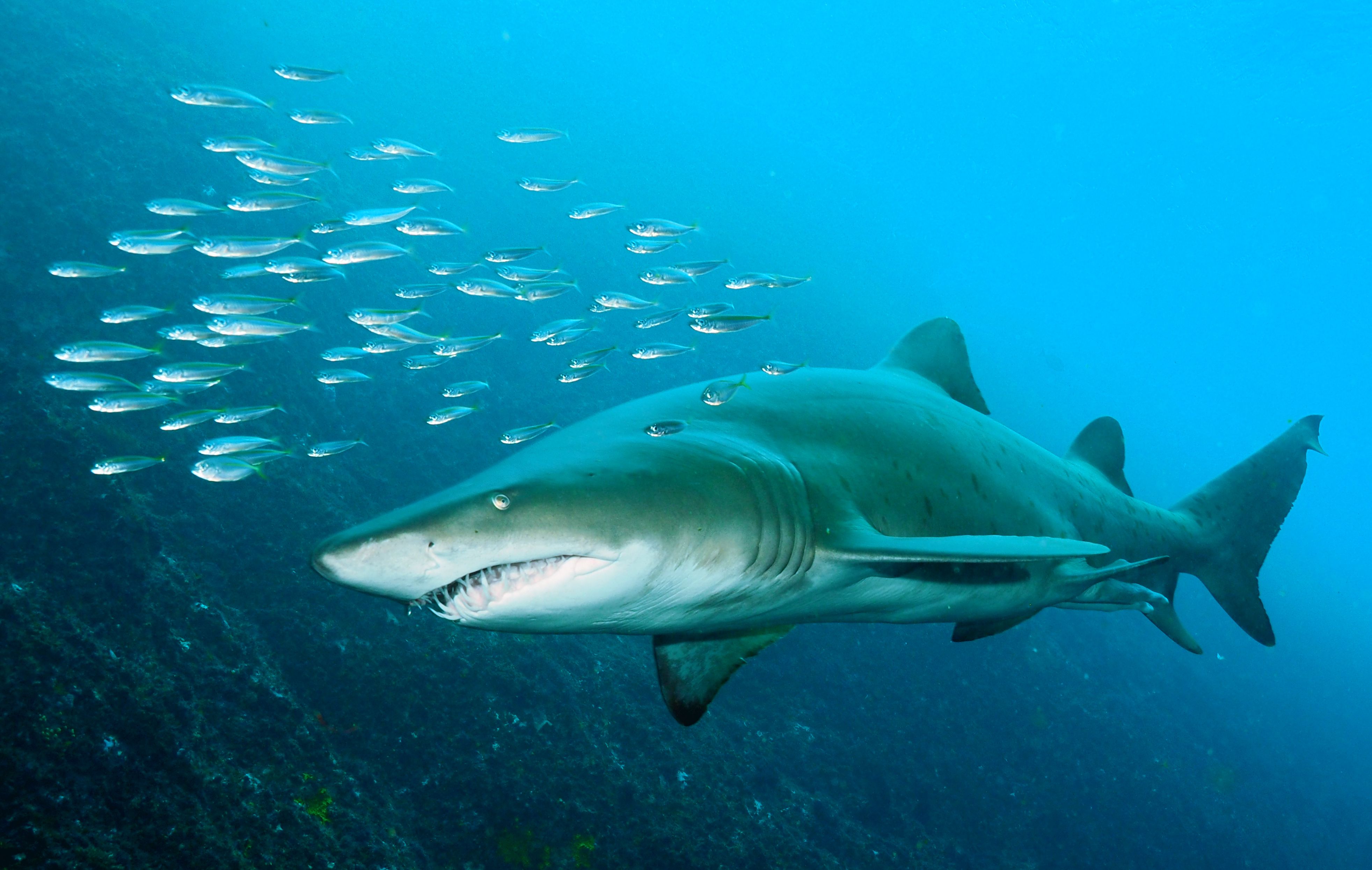
Grey Nurse Shark Sydney, Australia Joe's Scuba Shack
The grey nurse shark-diver interaction research is a partnership project, which draws on good science and collaboration with industry. It monitors for possible impacts of divers on this critically endangered species to help QPWS&P protect grey nurse shark designated areas and aggregations. Grey nurse shark with fishhook in its mouth.
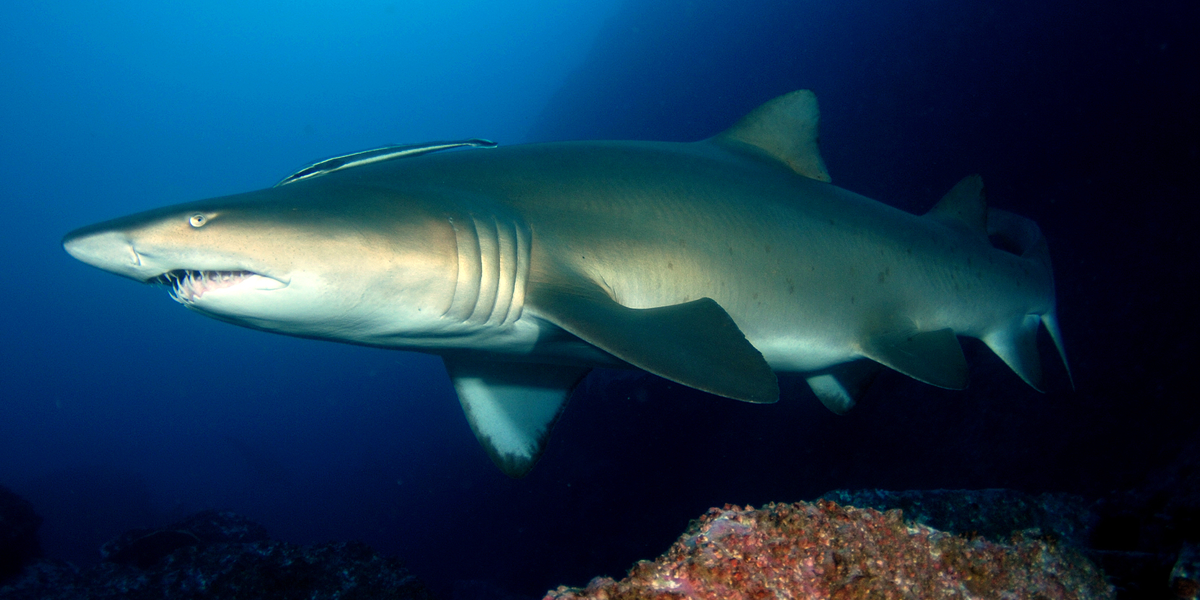
Sizing up Australia’s eastern Grey Nurse Shark population MARINE
The nurse shark ( Ginglymostoma cirratum) is an elasmobranch fish in the family Ginglymostomatidae. The conservation status of the nurse shark is globally assessed as Vulnerable in the IUCN List of Threatened Species. [2]

Grey Nurse Shark A Grey Nurse Shark (Carcharias taurus). F… Flickr
The grey nurse shark, which is also known as the sand tiger shark and spotted ragged-tooth shark, is found worldwide in tropical to temperate coastal waters. In Australia, it occurs in two distinct and geographically separate populations - one on the east coast, the other on the west coast. The east coast population is critically endangered.

Nursing Grey Nurse Shark populations back to health CSIROscope
The grey nurse shark is a large, stout-bodied shark that can grow up to 3.6 meters in length and weigh up to 230 kilograms. It has a unique pattern of spots and stripes on its body which helps it blend into the ocean floor. Last updated: 6th July, 2023 Grey Nurse Shark - Photo the Ocean Agency / Adobe What is a grey nurse shark?

Facts About the Grey Nurse Sharks
This project will use cutting-edge genetics to understand the population size, structure and trajectory of the critically-endangered east coast grey nurse shark (Carcharius taurus), a high-priority action in its recently released recovery plan. Grey nurse sharks migrate up and down the east coast of Australia, from Narooma in southern NSW to.

Grey Nurse Shark, SW Rocks Damien Siviero Photography
Saving Australia's grey nurse shark is a major challenge, requiring community cooperation and ongoing research. HAVING COMPLETED A marine science degree on the NSW Central Coast, and learnt to dive from an early age, I have always admired grey nurse sharks - they are a regular underwater companion of mine to study and photograph.

GALLERY Protecting the grey nurse shark Australian Geographic
Don't swipe away. Massive discounts on our products here - up to 90% off! Awesome prices & high quality here on Temu. New users enjoy free shipping & free return.
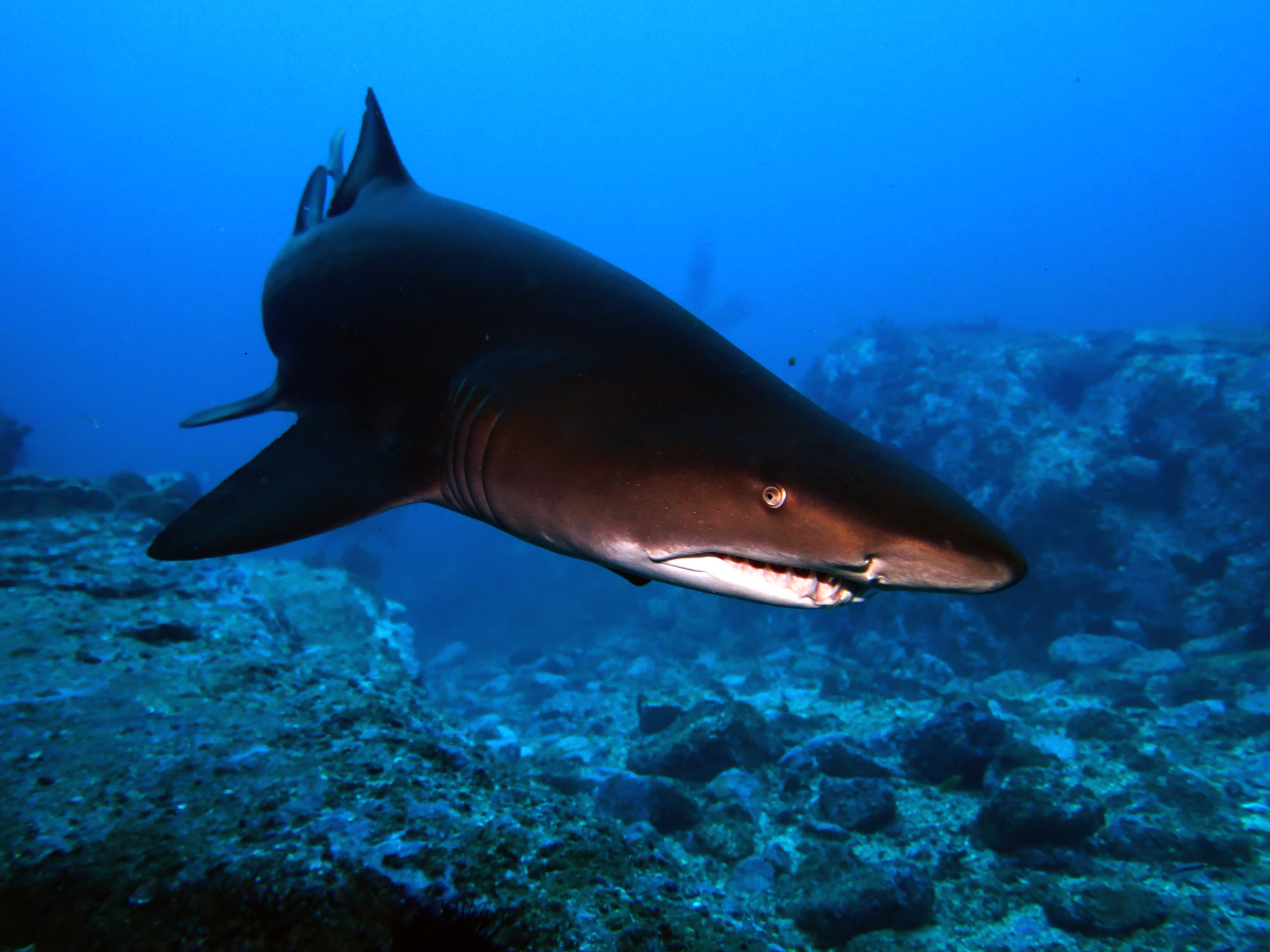
4th Feburary 2016 Manta Arch perfect habitat for Grey Nurse Sharks
Conservation biologist Adam Stow, an associate professor in the school of natural sciences at Macquarie University in Sydney, has been studying the grey nurse shark for nearly 20 years. He said the species remained under threat of extinction.
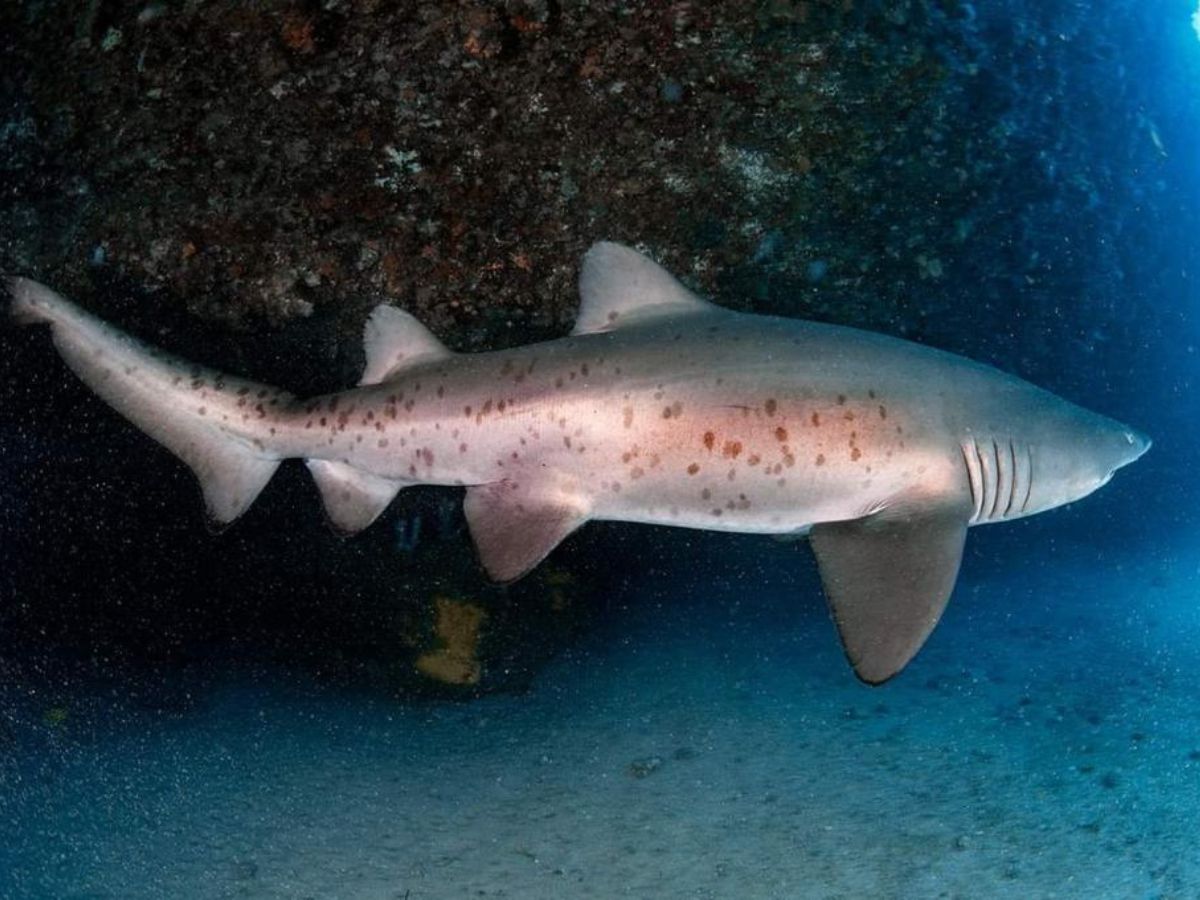
Facts About the Grey Nurse Sharks
Greynurse Sharks are coloured grey-brown or bronze on the upper parts of their body, with a pale white underbelly. Brownish spots occur on the upper body and tail fin, and are most prominent in juveniles. They differ from whaler sharks in that their awl-like teeth visibly protrude from the mouth.

Before It’s Too Late Grey Nurse Sharks Australian Traveller
There are two populations of Grey Nurse Sharks in Australia - the east coast population lives along the coast of New South Wales and southern Queensland, and the west coast population is distributed in the southwest coastal waters of Western Australia. Lifestyle of the Grey Nurse Shark
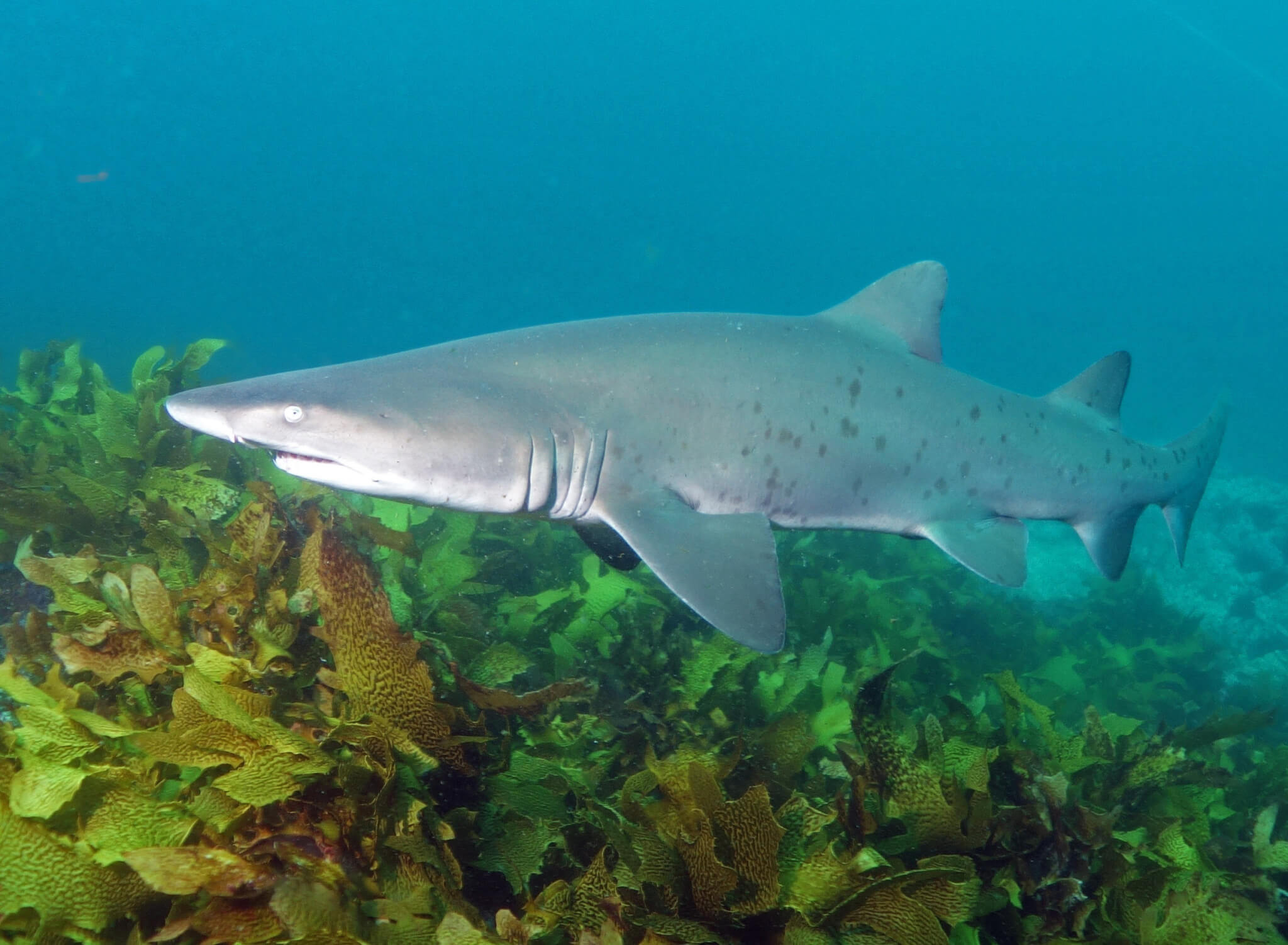
Critically Endangered Grey Nurse Shark Habitat Protection Slashed
The grey nurse shark, the name used in Australia, is the second-most used name for the shark, and in India it is known as blue-nurse sand tiger. However, there are unrelated nurse sharks in the family Ginglymostomatidae. The most unambiguous and descriptive English name is probably the South African one, spotted ragged-tooth shark. [2] [4]